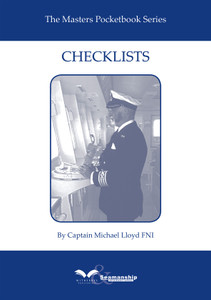
This book examines the operations of standby vessels covering the older, newer and converted types.
There are approximately 130 SBVs employed in the North Sea Sector. This book is a comprehensive guide to those ships, looking at the ships themselves, the crew on board and the work carried out by SBVs. It covers:
- Equipment on board
- crew responsibilities
- onboard training and exercises
- baseline standards
- launch and recovery
- rescue operations (including MOB and helicopter ditching).
Many years ago, when the first oil platforms were installed in the North Sea, a system of standby vessels was introduced. Initially, these consisted of fishing boats hired casually to stand by in the area of the platform to perform some kind of assistance in case of emergency.
Then in 1988 came the Piper Alpha disaster which had a traumatic affect on the whole oil industry in the North Sea and, together with many other concerns, the need for a professional system for the rescue and recovery of platform personnel was addressed, resulting in a legal requirement to provide such a system.
A reluctant oil industry now had Standby Vessels (SBVs) foisted on them together with a laid down specification of what the ships should be capable of doing. This book is intended to examine the reality of the situation today including the required capabilities of an SBV and the relationships between the various parties.
At present, there are approximately 130 SBVs employed in the North Sea sector. Manning these ships is a combined pool of around 3,000 seafarers, comprising Captains, Officers and Ratings.
Since 1986, they have been responsible for the rescue of around 300 persons, with a number of these rescues not being oil field related, but instead from commercial shipping, fishing vessels and leisure craft.
If you were to ask any group of those in charge of on-scene rescue operations what is the most difficult element of any rescue operation, hopefully the majority of them would reply the safety of the rescuers who are eager to fulfil their task.
Even the Law of the Sea emphasises that, while every endeavour must be made to save the life of others, you must not put your own crew in danger. I have always wondered about this as the mere act of sending a boat away in a force 7 carries some danger, so obviously those in charge of any rescue have to weigh up the increased degree of danger each order carries rather than the constant element of danger that exists, especially at sea.
The Standby Vessels (SBVs) exist for one principal purpose, the saving of life, specifically the life of those working on the various platforms and fixed storage vessels (FPSOs). To do this, ships are equipped with equipment and boats and, equally important, crews who have had specialised training in the use of these. This formal training is continually added to and tested by the constant exercises in rescue procedures. The abilities of individual ships varies with the design of the ship, the type and standard of rescue equipment provided and, most important, the degree of leadership and dedication shown by the Master. The standard of training and exercises he imposes on his ship reflect in the quality of the crew. From this, it could be said that almost every SBV is different in its abilities although, without doubt, every ship will do its utmost in the event of any emergency.
Acknowledgements
Author’s
Introduction
The Requirement for Standby Vessels (SBVs)
1
The
Ships
2 Responsibilities
3 The Crews
4 The Training
5 The Tasks
6 Baseline Standards
7 Operations
8 Ship Handling Practices
9 Additional Duties
10 Improvement
Summary
Glossary
Witherbys
Witherbys titles are developed using scripts developed by technical experts that are peer reviewed within work groups. Typically, they seek to improve understanding of the regulations, recommendations and guidelines issued by Industry.
Witherbys staff have significant expertise in the fields of navigation and hazardous cargoes as well as in the presentation of complex subjects in a graphic and easy to understand manner.
- Number of Pages:
- 100
- ISBN:
- 9781905331390
- Published Date:
- April 2009
- Binding Format:
- Paperback
- Book Height:
- 180 mm
- Book Width:
- 120 mm
- Weight:
- 0.1 kg
- Author:
Michael Lloyd
- Preview:
- Yes
- Publication Date:
- April 2009





